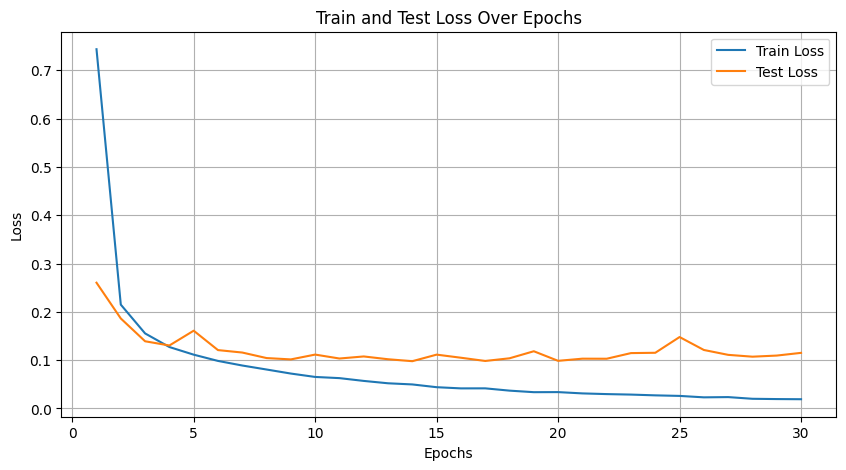This is a VERY COARSE version and absolutely NOT FULLY TESTED! it's only intended for experiementing! Any discussion and criticism are welcome! Check the issues for more information!
This repo is developed based on ChebyKAN
Kolmogorov-Arnold Networks (KAN) using Jacobi polynomials instead of B-splines.
This is inspired by Kolmogorov-Arnold Networks https://arxiv.org/abs/2404.19756v2, which uses B-splines to approximate functions. B-splines are poor in performance and not very intuitive to use. I'm trying to replace B-splines with Jacobi polynomials.
Jacobi polynomials are orthogonal polynomials defined on the interval [-1, 1]. They are very good at approximating functions and can be calculated recursively. Chebyshev polynomials and some other orthogonal polynomials are special cases of it.
A simple (and naive) implementation of JacobiKANLayer is provided in JacobiKANLayer.py. Its not optimized yet.
Just copy JacobiKANLayer.py to your project and import it.
from JacobiKANLayer import JacobiKANLayerConstruct a JacobiKAN for MNIST
class MNISTJacobiKAN(nn.Module):
def __init__(self):
super(MNISTJacobiKAN, self).__init__()
self.jacobikan1 = JacobiKANLayer(28*28, 32, 3)
self.ln1 = nn.LayerNorm(32) # To avoid gradient vanishing caused by tanh
self.jacobikan2 = JacobiKANLayer(32, 16, 3)
self.ln2 = nn.LayerNorm(16)
self.jacobikan3 = JacobiKANLayer(16, 10, 3)
def forward(self, x):
x = x.view(-1, 28*28) # Flatten the images
x = self.jacobikan1(x)
x = self.ln1(x)
x = self.jacobikan2(x)
x = self.ln2(x)
x = self.jacobikan3(x)
return xNote: Since Jacobi polynomials are defined on the interval [-1, 1], we need to use tanh to keep the input in that range. We also use LayerNorm to avoid gradient vanishing caused by tanh. Removing LayerNorm will cause the network really hard to train.
Have a look at Jacobi-KAN_MNIST.ipynb, Function_Interpolation_Test.ipynb, and Multivar_Interpolation_Test.ipynb for more examples.
MNIST: ~97% accuracy after about 10 epochs with degree 3 JacobiKAN. Faster and lower test loss than ChebyKAN, which needs about 20 epochs and degree 4.
Epoch 1, Train Loss: 0.7438, Test Loss: 0.2603, Test Acc: 0.94
Epoch 2, Train Loss: 0.2149, Test Loss: 0.1863, Test Acc: 0.95
Epoch 3, Train Loss: 0.1553, Test Loss: 0.1390, Test Acc: 0.96
Epoch 4, Train Loss: 0.1271, Test Loss: 0.1303, Test Acc: 0.96
Epoch 5, Train Loss: 0.1113, Test Loss: 0.1609, Test Acc: 0.96
Epoch 6, Train Loss: 0.0984, Test Loss: 0.1208, Test Acc: 0.96
Epoch 7, Train Loss: 0.0889, Test Loss: 0.1157, Test Acc: 0.96
Epoch 8, Train Loss: 0.0806, Test Loss: 0.1043, Test Acc: 0.97
Epoch 9, Train Loss: 0.0722, Test Loss: 0.1015, Test Acc: 0.97
Epoch 10, Train Loss: 0.0652, Test Loss: 0.1115, Test Acc: 0.97
Epoch 11, Train Loss: 0.0627, Test Loss: 0.1034, Test Acc: 0.97
 The network parameters are [28*28, 32, 16, 10] with 4 degree Jacobi polynomials.
The network parameters are [28*28, 32, 16, 10] with 4 degree Jacobi polynomials.
It needs a low learning rate (2e-4) to train. The network is very sensitive to the learning rate.
Note that it's still not as good as MLPs. Detailed comparison is on the way.